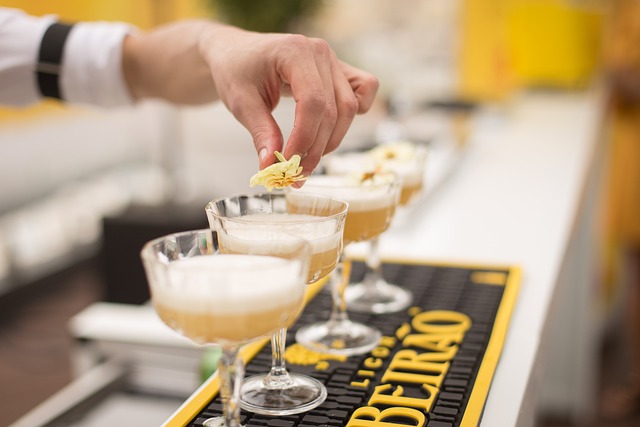-
Table of Contents
“Discover the Rich Flavors of Italy with Essential Italian Liqueurs!”
Welcome to Essential Italian Liqueurs: A Comprehensive Guide! This guide is designed to provide you with an in-depth look at the world of Italian liqueurs. From the classic amaros to the modern-day aperitivos, we will explore the history, production, and flavor profiles of some of the most popular Italian liqueurs. We will also discuss the various ways to enjoy these liqueurs, from classic cocktails to modern-day creations. Whether you are a novice or an experienced liqueur enthusiast, this guide will provide you with the knowledge and tools to explore the world of Italian liqueurs. So, let’s get started!
Exploring the Different Types of Essential Italian Liqueurs: A Guide

Are you looking to explore the world of Italian liqueurs? If so, you’ve come to the right place! Italy is home to some of the most delicious and unique liqueurs in the world. From the classic Amaretto to the lesser-known Limoncello, there’s something for everyone. In this guide, we’ll explore the different types of Italian liqueurs and what makes them so special.
Amaretto: This classic Italian liqueur is made from apricot pits and almonds. It has a sweet, nutty flavor and is often used in desserts. It’s also a popular ingredient in cocktails like the Amaretto Sour.
Limoncello: This bright yellow liqueur is made from lemons and sugar. It has a sweet, tart flavor and is often served as an after-dinner digestif. It’s also a popular ingredient in cocktails like the Limoncello Martini.
Grappa: This strong, clear liqueur is made from the skins, seeds, and stems of grapes. It has a strong, earthy flavor and is often served as an after-dinner digestif.
Sambuca: This anise-flavored liqueur is made from anise, sugar, and water. It has a sweet, licorice-like flavor and is often served as an after-dinner digestif. It’s also a popular ingredient in cocktails like the Sambuca Sour.
Amaro: This bitter liqueur is made from herbs, spices, and citrus. It has a strong, herbal flavor and is often served as an after-dinner digestif. It’s also a popular ingredient in cocktails like the Amaro Sour.
Strega: This herbal liqueur is made from a variety of herbs and spices. It has a sweet, herbal flavor and is often served as an after-dinner digestif.
These are just a few of the many types of Italian liqueurs. Whether you’re looking for a sweet treat or a strong digestif, there’s something for everyone. So, why not explore the world of Italian liqueurs and find your favorite?
How to Create Delicious Cocktails with Essential Italian Liqueurs
Are you looking to add a little Italian flair to your next cocktail party? Look no further than essential Italian liqueurs! These delicious spirits are the perfect way to add a unique flavor to your favorite drinks. Here’s how to create delicious cocktails with essential Italian liqueurs.
First, you’ll need to stock up on some essential Italian liqueurs. Popular choices include limoncello, amaretto, and grappa. Limoncello is a sweet, lemon-flavored liqueur that’s perfect for adding a citrusy kick to your drinks. Amaretto is an almond-flavored liqueur that adds a nutty sweetness to cocktails. And grappa is a grape-based liqueur that adds a unique flavor to drinks.
Once you’ve got your liqueurs, it’s time to start mixing! Here are some classic Italian cocktails you can make with your liqueurs:
• The Limoncello Martini: This classic Italian cocktail is made with limoncello, vodka, and a splash of orange juice. Shake all the ingredients together with ice and strain into a martini glass.
• The Amaretto Sour: This sweet and sour cocktail is made with amaretto, lemon juice, and simple syrup. Shake all the ingredients together with ice and strain into a rocks glass.
• The Grappa Sour: This unique cocktail is made with grappa, lemon juice, and simple syrup. Shake all the ingredients together with ice and strain into a rocks glass.
These are just a few of the delicious cocktails you can make with essential Italian liqueurs. So get creative and start mixing up some Italian-inspired drinks for your next party!
The History and Origins of Essential Italian Liqueurs
Italian liqueurs have been around for centuries, and they have a long and interesting history. From the classic amaretto to the more modern limoncello, these liqueurs have been enjoyed by generations of Italians and have become a staple of Italian culture.
The earliest known Italian liqueur is amaro, which dates back to the 16th century. Amaro is a bitter liqueur made from a variety of herbs and spices, and it is often served as an after-dinner digestif. It is believed that the recipe for amaro was created by monks in the Italian Alps, and it quickly became popular throughout the country.
Another classic Italian liqueur is amaretto, which is made from almonds and apricot pits. It is believed that the recipe for amaretto was created in Saronno, Italy in the 16th century. The liqueur was originally used as a medicinal remedy, but it soon became popular as a sweet, nutty-flavored liqueur.
Limoncello is another popular Italian liqueur, and it is made from the zest of lemons. It is believed that the recipe for limoncello was created in the Amalfi Coast of Italy in the 19th century. The liqueur is traditionally served cold as an after-dinner digestif, and it has become a popular choice for cocktails and other drinks.
Grappa is another classic Italian liqueur, and it is made from the skins and seeds of grapes. It is believed that the recipe for grappa was created in the Veneto region of Italy in the 16th century. Grappa is traditionally served as a digestif, and it is often used to make cocktails and other drinks.
These are just a few of the many Italian liqueurs that have been enjoyed by generations of Italians. From the classic amaro to the more modern limoncello, these liqueurs have become a staple of Italian culture and are enjoyed by people all over the world.
The Health Benefits of Essential Italian Liqueurs
Italian liqueurs are a staple of Italian culture and cuisine, and they offer a variety of health benefits. From digestive aid to improved circulation, these liqueurs can be a great addition to your diet.
Amaretto is a sweet almond-flavored liqueur that is often used in desserts. It is made from a base of apricot pits, almonds, and other ingredients. Amaretto is known to help with digestion, as it contains enzymes that help break down food. It also contains antioxidants that can help reduce inflammation and improve circulation.
Limoncello is a lemon-flavored liqueur that is made from the zest of lemons. It is known to be a great source of vitamin C, which can help boost the immune system and fight off colds and flu. It also contains antioxidants that can help reduce inflammation and improve circulation.
Grappa is a grape-based liqueur that is made from the skins and seeds of grapes. It is known to be a great source of antioxidants, which can help reduce inflammation and improve circulation. It also contains polyphenols, which can help protect against heart disease and cancer.
Sambuca is an anise-flavored liqueur that is made from anise, fennel, and other ingredients. It is known to be a great source of antioxidants, which can help reduce inflammation and improve circulation. It also contains compounds that can help reduce stress and anxiety.
These are just a few of the many health benefits of Italian liqueurs. Whether you’re looking for a digestive aid or a way to improve your circulation, these liqueurs can be a great addition to your diet. So, why not give them a try?
Q&A
Q1: What is the main ingredient in limoncello?
A1: The main ingredient in limoncello is lemons. The liqueur is made by infusing lemons in a high-proof alcohol, such as vodka or grain alcohol, and then adding sugar and water.Essential Italian Liqueurs: A Comprehensive Guide is an invaluable resource for anyone interested in learning more about the history and production of Italian liqueurs. It provides an in-depth look at the various types of liqueurs, their production methods, and their flavor profiles. With its comprehensive coverage of the subject, this guide is an essential reference for anyone looking to explore the world of Italian liqueurs.
![]()











